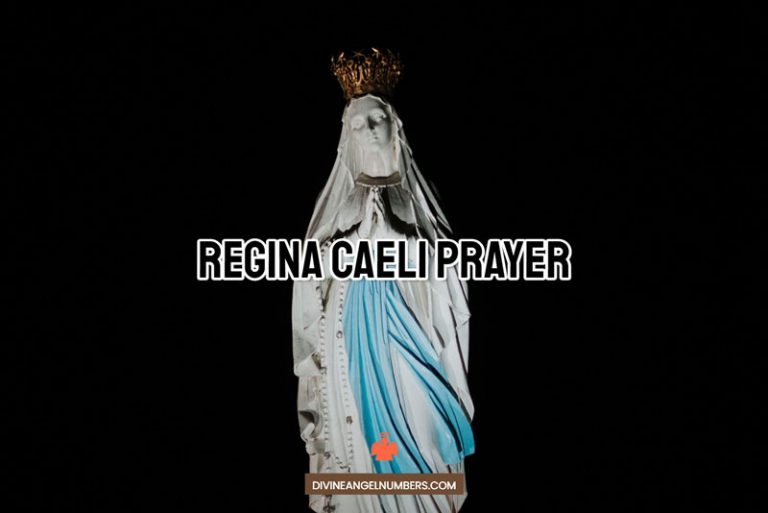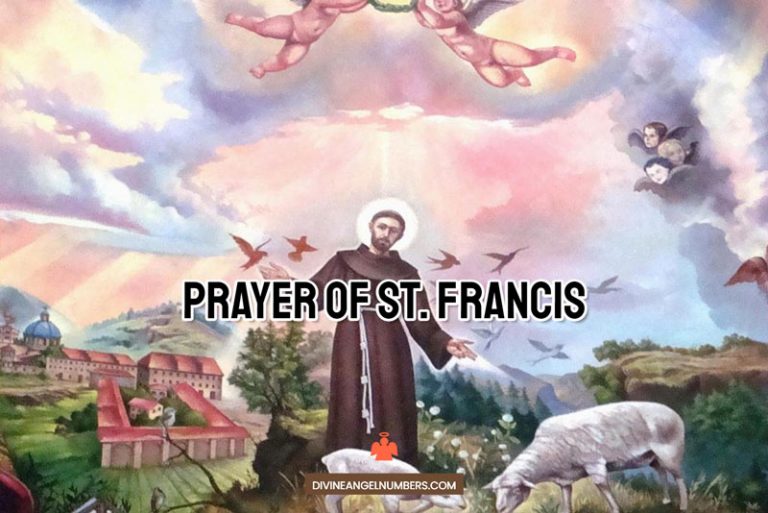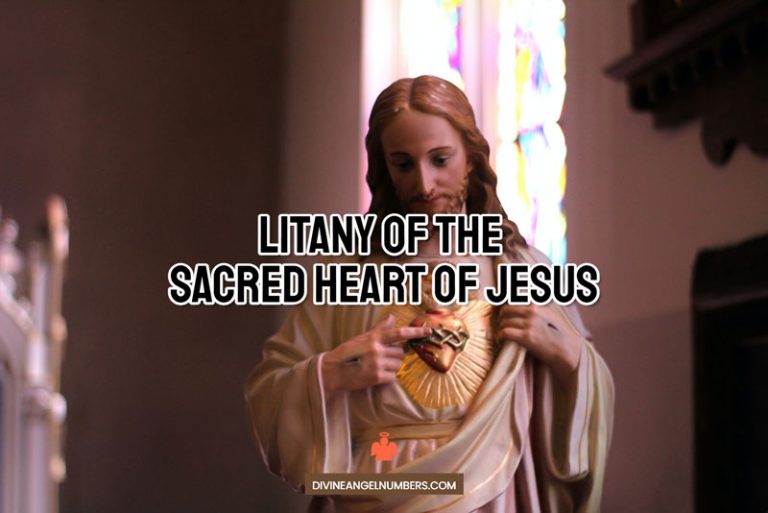The Angelus Prayer
V. The Angel of the Lord declared unto Mary,
R. And she conceived of the Holy Spirit.
(Hail Mary…)
V. Behold the handmaid of the lord.
R. Be it done unto me according to thy word.
(Hail Mary…)
V. And the word was made flesh.
R. And dwelt among us.
(Hail Mary…)
V. Pray for us, O Holy Mother of God.
R. That we may be made worthy of the promises of Christ.
Let us pray:
Pour forth, we beseech You, O Lord,
Your Grace into our hearts;
that as we have known the incarnation of Christ,
your Son by the message of an angel,
so by His passion and cross
we may be brought to the glory of His Resurrection.
Through the same Christ, our Lord.
Amen.
Origins of The Angelus Prayer
The Angelus prayer was originally recited in Latin and the first document to record the Angelus in its present form is a catechism printed in Venice in 1560. Before the Angelus prayer, in the Middle Ages, the custom to recite three Hail Marys to the evening sound of the bells was largely prevalent. By the 15th century, the practice was extended to include a second recitation of the Hail Mary in the morning as well.
However, by 1571, the practice to recite the Angelus became widely prevalent after Pope St. Pius V included the Angelus in a liturgical devotional of the Virgin Mary. In 1724, in the document “Ininctae Nobis,” Pope Benedict XIII granted indulgences for the recitation of the Angelus.
In 1742, Pope Benedict XIV modified the Angelus by replacing it with the antiphon “Regina Coeli” during Easter. A practice that continues to this day. Pope Pius VII added three Glory Be’s to the end of the Angelus in 1815. He did so in an act to show gratitude for the gifts bestowed on our bellowed Lady of the Blessed Trinity.
According to the brief history provided by the University of Dayton on the origin of the Angelus prayer, “From early on, The Angelus was said for peace and safety.” On the topic of the origin of the Angelus, the Catholic Encyclopaedia says, “the history of the Angelus is by no means easy to trace with confidence, and it is well to distinguish in this matter between what is certain and what is in some measure conjectural. In the first place, it is certain that the Angelus at midday and in the morning was of a later introduction than the evening Angelus.
Secondly, it is certain that the midday Angelus, which is the most recent of the three, was not a mere development or imitation of the morning and evening devotion.
Thirdly, there can be no doubt that the practice of saying three Hail Marys in the evening somewhere about sunset had become general throughout Europe in the first half of the fourteenth century and that it was recommended and indulgenced by Pope John XXII in 1318 and 1327.”
Throughout the centuries, workers would halt their labors in the fields and pray the Angelus when they heard the Church bells ring. The practice is even depicted in Jean-Francois Millet’s famous painting that depicts two workers in a potato field with their hands folded in prayer. There are even stories that suggest animals would stop plowing the land automatically when they heard the bell.
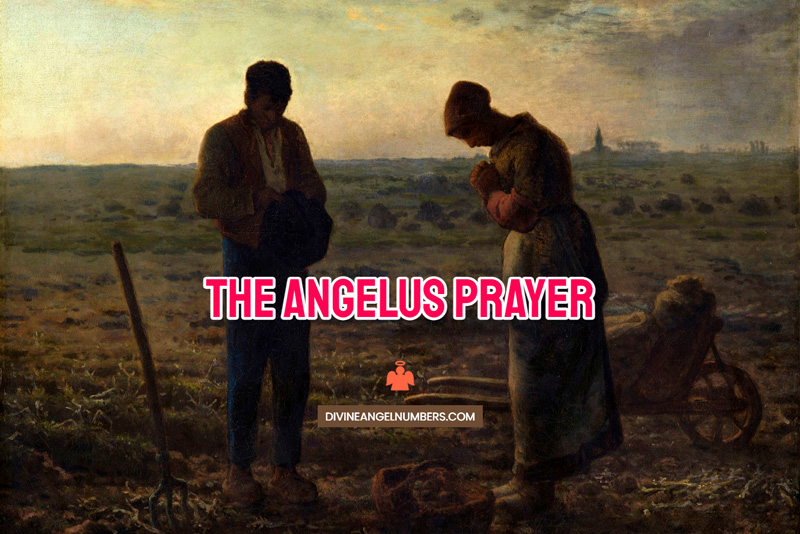
Meaning of The Angelus Prayer
The Angelus is the set of three antiphons that reflect on the Incarnation of Jesus Christ at the Annunciation. The Incarnation of Jesus Christ at Annunciation is considered a profound moment in Christianity because Angel Gabriel announced God’s invitation for the Blessed Virgin Mary, to which she gladly replied yes.
Pope St. Paul VI wrote in the Apostolic Exhortation ‘Marialis Cultus,’ “What we have to say about the Angelus is meant to be only a simple but earnest exhortation to continue its traditional recitation wherever and whenever possible.
The Angelus does not need to be revised, because of its simple structure, its biblical character, its historical origin which links it to the prayer for peace and safety, and its quasi-liturgical rhythm which sanctifies different moments during the day, and because it reminds us of the Paschal Mystery, in which recalling the Incarnation of the Son of God we pray that we may be led “through his passion and cross to the glory of his resurrection.”
Read more: Padre Nuestro: Our Father Prayer (Lord’s Prayer in Spanish)
How to Pray The Angelus?
Originally, the Angelus prayer was prayed three times a day: morning, noon, and evening. However, in the present day, even the most devout Christians practice the custom of praying the prayer at midday.
After the Easter season ends, from the day of Easter until the day of Pentecost, the Angelus is replaced by the Regina Coeli prayer, which emphasizes the joy of the Resurrection of Jesus Christ.
You can pick any time of the day to pray the Angelus, as long as you remember to pray it once every day. Many priests recommend combining the Angelus with a regular habit such as eating lunch.
You can also use the alarm on your phone, computer, and other devices to remind you to recite the prayer.
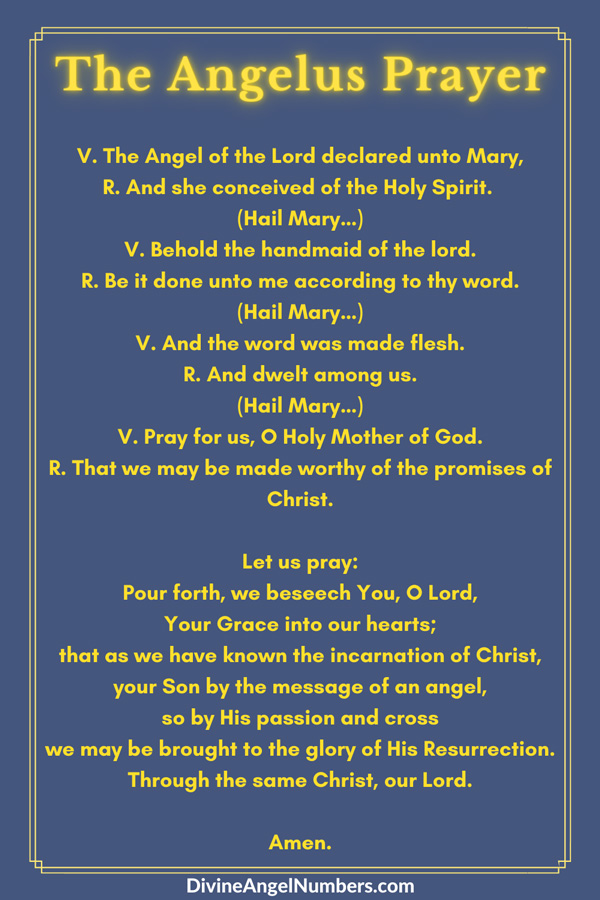
Angelus: Significance
With our busy lives, responsibilities, and obligations we can forget about God altogether. When we get too caught up trying to take all the control of our lives, we start acting childlike and end up without peace or joy.
However, by reciting the Angelus, we give ourselves a daily reminder to ask God for forgiveness and direction in life. It also helps us see and imitate Mary’s example of openness to God’s will.
The Angelus reflects on the Incarnation of Jesus Christ at the Annunciation, a moment which many Christians believe is very important to meditate on as it represents the fulfillment of God’s promise to His people, beginning with the Annunciation of Mary. Archangel Gabriel invites Mary to become the Mother of the Redeemer by presenting God’s plan of salvation for her.
The Blessed Virgin Mary responds with trust, consents to the word of God, and becomes the Mother of Jesus Christ. The Angelus focuses on telling Mary’s continued collaboration with the divine plan and her obedience for the salvation of the entire human race and herself. We are reminded that Mary listens to our voices and responds to our supplication.
Read more: The Mysteries of the Rosary
Conclusion
Just like a heavenly message, the Angelus calls upon man to interrupt his earthly routine and turn his attention toward the Blessed Virgin Mary. From the moment she accepted Angel’s proclamation, the eternal word began to exist as a human being in time.
The Angelus is a simple yet beautiful prayer that commemorates the mystery of the Incarnation and pays homage to Mary’s role in the history of salvation. Among many Catholic devotions, there are many prayers that help us contemplate our relationship with God which are as beautiful as the Angelus.

